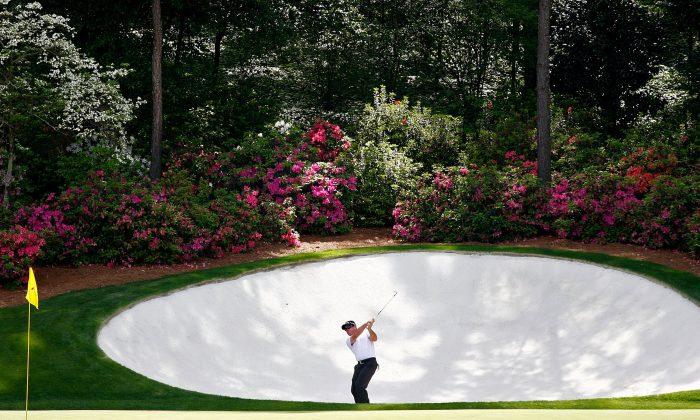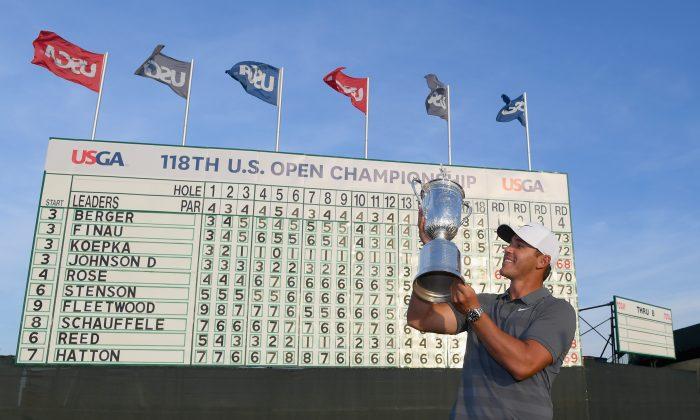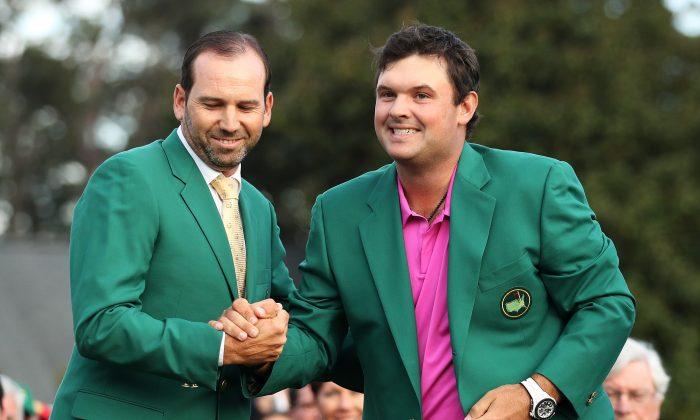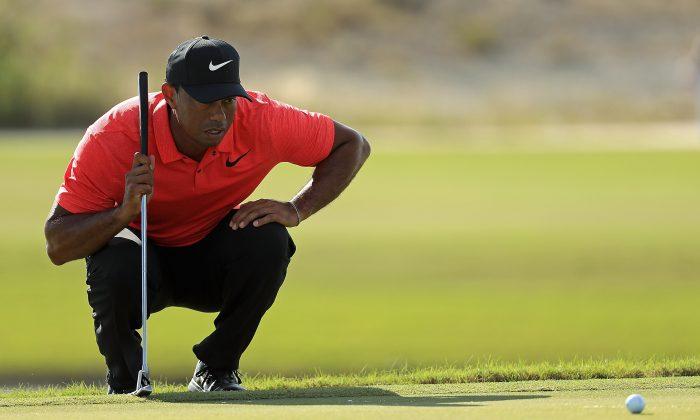AUGUSTA, GA—As viewers prepare to watch this year’s Masters the perspective of architects actively involved in golf course design can provide additional insights into one of the most famous golf courses globally. The Augusta National Golf Club was brought into being through the collaborative efforts of founder Bobby Jones and legendary architect Alister Mackenzie. Since opening in the early 1930’s the course has experienced numerous different changes—or as club officials are quick to point out are “improvements”—to its core design. Some of the results have been embraced, others panned as being out of character. The following interviews provide the perspective of four active professionals on how the existing course stacks up now.
What reaction would architect Dr. Alister Mackenzie have to the various changes made to the course he designed in collaboration with Bobby Jones over the years?
Ian Andrew: Mackenzie designed Augusta National around his greens. The bold contours dictated the ideal angles of approach and minimized the need for bunkering. The result was an undefined path where the players had to learn the ideal positions and discover the shots would produce the best results. Recent changes now dictate play and punish those who won’t follow the defined path. MacKenzie would be disappointed in that style of architecture imposing itself on his design.
Lester George: He would barely recognize it and would have no concept of the reason for the length. I am not sure he would think much of it—other than maybe for the grooming. He might be curiously astonished at the detail and mowing heights but overall, I think he would have general disdain for the changes made to his masterpiece.
Stephen Kay: If Mackenzie got to know what the game was like today—how far they hit it, improved maintenance—he would approve of most changes, except I think he would not like the simple shapes of the bunkers he would want them to be more intricate.
Richard Mandell: Both he and Jones would be less than pleased about the addition of sand bunkers and narrowing of the golf course. I believe they would be at the forefront of dialing the golf ball back, distance-wise, as their counter. Unfortunately, even their efforts would lose out to the equipment manufacturers.

Specify one design change you favor and one wrongly carried out.
SK: Any adding of length to the great heroic par-5’s 13th & 15th holes is very good. When these guys can hit a second shot with a 5-iron on par-5’s and reach the green it ruins the original design intent. I do not like it when they added their rough, even though it is more of ’step-up' rough. They took away some of the strategy—the wider the fairways the more risk & reward there is.
RM: The re-design of the 16th by RTJ in 1948 stands out to me, not to say the original wouldn’t have held its own over the years. That said, the straightening of number eleven by Jones has, over the years, become less and less a good idea as it gets narrower and narrower.
IA: I like the relocation of the 10th green by Perry Maxwell—added a level of complexity to a simple hole. Do you take a risk and try draw the ball around the corner to gain a shorter approach from a better angle? Or do you play safe and face a long iron from a less than ideal angle from a hanging lie? You’re going to have to hit a difficult shot at some point to play the hole. I hated the severe lengthening, addition of rough, and planting of trees by Tom Fazio and Hootie Johnson. That overreaction to low scores delivered a series of dull tournaments. But at least they backed off the rough lines, removed a few trees and set the course up shorter to return the excitement.
LG: Adding the pond on the 16th makes it a better hole. The pond adds strategic drama and excitement to what was an otherwise unmemorable hole. Good change. Lengthening and Tiger-proofing the course has catered to a few players, but generally failed to accomplish the prevention of lower scores intended. Discussion about purchasing additional land to lengthen the 13th hole is remarkably short-sighted and would ruin one of the most iconic holes in the world that would be a terrible change. I'd play it as a par-4 during The Masters, rather than destroying it.

Augusta National was created with the premise in being an inland version of The Old Course at St. Andrews which both Dr. Mackenzie and Jones were both great fans of its design. Do playing angles mean as much today given the nature of what golf has become at the highest levels of the game?
RM: Playing angles will only mean anything at the highest levels of the game as more length is added to each hole, which seems a bit counter-intuitive. But that is the crux of everyone’s gripes about changing golf courses over the years. Playing angles most certainly should mean something to the average golfer and our efforts as golf course architects, though.
LG: The only reason playing angles means anything at Augusta is because of the speed and contours of the greens. Augusta favors those who can hit long and have extraordinary imagination and creativity on the greens. The 2nd hole demonstrates this. Even the longer hitters know they’re better off approach the green from the right to have a chance at birdie or eagle.
IA: I walked the course with Mike Weir a week before the 2009 event. On every tee he indicated the ideal placement and why. On every approach he talked about what you should never chase and where never to miss. He made it clear how important tactics were to scoring. The walk also made me sad for Mackenzie and Jones. A number of times he pointed out where a location he used to play for. Most were in the rough but one was lost in planted with trees. He lamented the lost opportunity to use those preferred wider ideal angles of attack.
SK: Yes, angles are just as important whether you are bouncing the golf ball or flying it into the green. Angles make for good design.

The most underrated and overrated holes and why?
LG: The most overrated hole is the 17th. Now that Ike’s tree is gone—and not since replaced—the 17th is a mediocre penultimate hole. The most underrated hole is the 11th.
Difficult drive to newly narrowed fairway landing area. Followed by the need to hit a right-to-left approach shot to a green fronted on the left by water. In years past, many Masters championships have been decided here.
SK: The 3rd is a good hole with a great green while the 16th designed by Robert Trent Jones is a version of a “Redan Hole” but seems to be an easy par—not a difficult par—as RTJ would say.
RM: The most underrated hole at Augusta may be the 8th hole—still a challenge for the pros to play an uphill, par-5 of 570 yards. I like the mounding left of the green and the semi-blind second shot for those going for the green. I am always a fan of a bunker-less green. The 11th is probably now the most overrated hole at Augusta.
IA: The 3rd is not only the most underrated but is potentially the best four. There is no obvious play because most of the green slopes away from play and any ball coming up short will roll back down the hill. Play safe off the tee and into the high right slope and you should make pars. Play directly at the pin and you might make birdie, but miss slightly and it’s probably a bogie. The 11th is the most overrated hole on the course. There’s no longer an aggressive line down the right because Fazio planted trees and took the aggressive line away. So all players play two conservative shots and try to leave with a par. It was far more fun when they could go right off the tee and try and chase the pins close to the water for a birdie. The doubles often defined where someone lost the tournament on the back nine.

Does extended lengthening of the course—now in excess of 7,400 yards—simply make the course too one-dimensional for those unable in hitting the ball extreme distances?
IA: Fazio and Johnston added all that length and rough to protect par. Short hitters like Mike Weir and Zack Johnson won because consistency was rewarded over bravado. It made the event dull. So now they set it up around 7,150 and let them score. Interestingly, the current distance favors the longer hitters because you have to play aggressive and score to win.
RM: I don’t think it does because many major-venue courses are going to that length and if we want to see pros hit more than driver-wedge, then it is necessary. Many of the original holes favored the big hitters anyway by design—depending on which side of the fairway they hit their tee shots. But as those fairways get narrower and narrower, that concept gets erased.
LG: Yes, it becomes a great hybrid second shot, putting exhibition.
SK: I am not sure I agree. Didn’t Zach Johnson win in 2007? But length as always been an advantage at Augusta—think Palmer and Nicklaus.
Is putting overemphasized at Augusta National given the severe contours and overall speed?

LG: Yes, usually the best putter in the hint all the way—whether making birdies or saving pars. Putting is the key to victory at The Masters in recent years.
SK: Yes, many of the greens are too steep and too fast it actually creates a situation of ‘luck’. Some downhill putts would only stop because the ball hits an imperfection, or grains of sand from a bunker shot or an old grown-in ball mark. Mackenzie would not like how the green play today.
IA: Absolutely not, the greens make the Masters what it is. They’re the defense of the course and usually punish poor position. We know this and become enthralled when a player goes for it all from poor position and makes the shot. This is an excitement unique to these greens, this design and this event.
RM: I don’t think so. The contours are the only features that differ from other major venues, yet that is where the true drama comes in for the spectators at least.
Your favorite to win this week.
RM: Justin Thomas.
LG: Short odds, Jason Day or Jordan Spieth—sleeper Smylie Kaufman.
IA: If I was betting my own money—$25—on Louis Oosthuizen at 30:1.
SK: Can I have two? Jason Day or Adam Scott.
About the Participants:

Ian Andrew, based in Brantford, Ontario, Canada. Has been working as a golf course architect for 27 years and is a member of the American Society of Golf Course Architects (ASGCA).

Stephen Kay, based in Egg Harbor City, NJ and in practice since 1983. Has designed 20 new golf courses while providing renovation services to over 300. A member of the ASGCA, specializing in, Donald Ross, A.W. Tillinghast and Charles Banks. Teaches design history and principles at Rutgers University. Links of North Dakota, Scotland Run, Architects GC, and restoration of Llanerch CC and Union League GC at Torresdale are examples of his work.

Richard Mandell, located in Pinehurst, North Carolina. Practicing since 1992, has won awards spanning three decades, including Golf Magazine Renovation of the Year in 2015 for Keller Golf Course in St. Paul, Minnesota. Associate member ASGCA and registered landscape architect and Certified Arborist.

Lester George, located in Richmond, VA and golf course architect for 25 years. ASGCA Board of Governors, retired U.S. Army Lt. Colonel. Notable award-winning designs and renovations include Kinloch Golf Club, The Old White, Country Club of Florida, Ballyhack Golf Club, Independence Golf Club.
M. James Ward, a member of Golf Writer’s Association of America (GWAA) and past member of Met Golf Writer’s Association (MGWA), has reported on golf’s grandest events since 1980 in a variety of forums.




